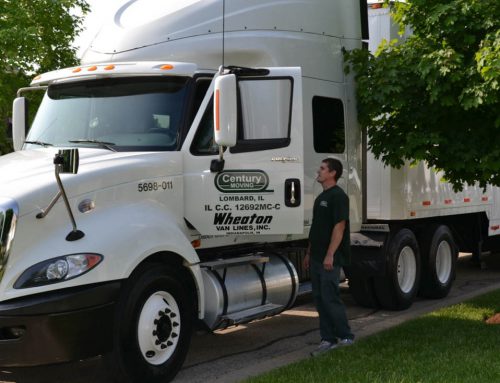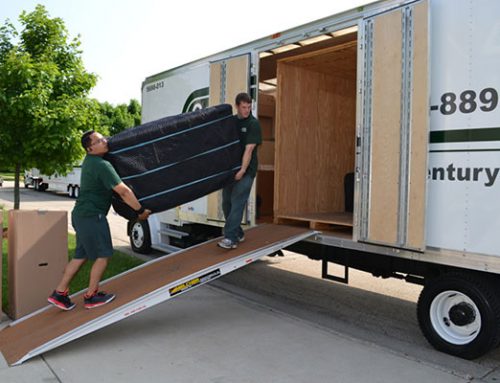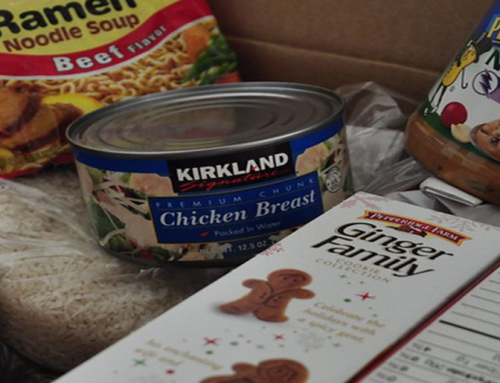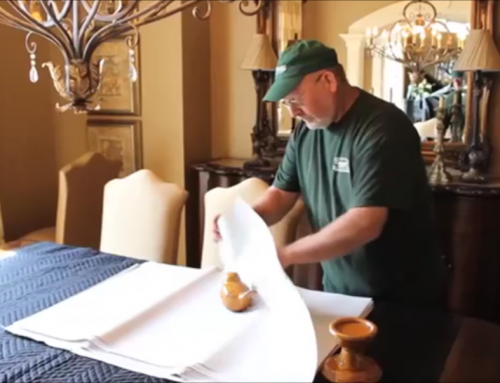July 31, 2020
Dogs, Cats, and Birds. Oh My!

Moving with Pets
If you think moving is stressful for humans, imagine what your pet will go through. They do not understand why it is happening, what the outcome will be, and they have no control over it. They know that change is taking place, sense your stress, and their routine is disrupted. While you can’t sit down and have a heart to heart discussion about the move, the great dog park within walking distance, or the many windows to look out of at their new home; you can take steps to ensure their safety and make the move less stressful for them.
Start Right Away
Prepare for your pet’s move as soon as you decide to move. This will give you time to organize items and services for your pets and give them time to acclimate to changes in their current environment. While they see you packing, and may even jump in the box to “help”, they see these unusual activities you are doing as uncertainty and change. The following helpful tips include ideas for both local and long distance moving. Many of the tips are geared toward dogs and cats, but all pets can experience stress from change. Use these tips as they fit your particular situation, and reach out to animal care professionals for recommendations.
Veterinarian
Especially if you are moving long distance and will be selecting another veterinarian, contact your current veterinarian to let them know you are moving, obtain your pet’s documentation, and ask for recommendations specifically helpful for your pet.
Supplies
Keep pet supplies together and separate from the rest of the items being moved. For example, pet beds, toys, bowls, medications, grooming tools, leashes, medical records, rabies vaccine documentation, and food and water.
Safety
Make sure your pet has a collar with an id tag (if appropriate – fish don’t usually cooperate with this but don’t often wander off, either). Pets may become frightened with the commotion of moving and in new surroundings. You may wish to have a microchip inserted to track them in case they become lost. This is something you may want to discuss with your vet. It is best if your pet is not at your home each day of moving because they can be stressed from the activity, unfamiliar people in the home, and they may run away. Inquire about pet sitting at a friend or family member’s home, professional pet sitter, or pet daycare.
Travel
Prepare safe and comfortable travel arrangements for your pet. Pet safe seat chairs/seat belts, carriers, and pet beds made for vehicles to help secure them during short and long trips. Do not leave your pet alone in a hot or cold car. Check with hotels, in advance, to be sure your pet is welcome and if there are additional fees. If your pet is not accustomed to travel in a car, take short trips and gradually increase the trip length. Gradually introduce them to a crate or carrier, if you will be using one and they do not have experience being in a small confined area. If your pet will be flying, be sure to discuss health and safety matters with your veterinarian as well as learn all of the regulations and requirements of the airline.
Emotional Needs
Spend time with your pet before and after the move. They need time and patience to acclimate to the confusion of packing, moving, and new surroundings. Pets can become confused and afraid. This is a busy time for you, as you prepare for your move, but providing attention to your pet will help them and you create a smoother transition. Pets sense your emotions. Therefore, display a calm positive demeanor and reward their good behavior. Maintain their normal routine as much as possible. Remember, support your pet’s mental and emotional support as these family members are likely to provide you with emotional support and happiness during this stressful time, as well.
New Home
It is exciting to set up your new home, explore your new neighborhood, and meet new neighbors. Check for regulations about pets and learn about places to go with your pet in your community. Before you move in, “pet-proof” your home. Create a safe environment by making sure electrical cords, poisonous plants, mouse traps, toilet lids, sump pump holes, small hiding areas, crawl spaces, and windows and doors, are inaccessible. After the movers have delivered your goods, before you bring your pet in, set up a room for them with their familiars, such as pet bed, toys, food, water, and items that have familiar smells. Starting with a smaller space, letting them become accustomed to new sensory inputs, and gradually expanding the area they explore, can help prevent overload, fear, and confusion. Spend time with them in this area so they do not feel alone. Help them feel safe. Show them where they need to go outside, if they do, and reward good behavior. Be patient as they may display behavior changes due to the disruption of their surroundings, routine, smells, and sounds. Reestablish their routine.
All Pets Need Care
Please resource additional helpful hints specifically related to your pet. Fish, birds, reptiles, amphibians, rabbits, gerbils, hamsters, guinea pigs, lizards, snakes, ferrets, hedgehogs, horses, and turtles, to name a variety, may need care provisions different than listed above. Make your home a pleasant and happy home for you and your pet. Enjoy time together.
July 31, 2020
Dogs, Cats, and Birds. Oh My!


Moving with Pets
If you think moving is stressful for humans, imagine what your pet will go through. They do not understand why it is happening, what the outcome will be, and they have no control over it. They know that change is taking place, sense your stress, and their routine is disrupted. While you can’t sit down and have a heart to heart discussion about the move, the great dog park within walking distance, or the many windows to look out of at their new home; you can take steps to ensure their safety and make the move less stressful for them.
Start Right Away
Prepare for your pet’s move as soon as you decide to move. This will give you time to organize items and services for your pets and give them time to acclimate to changes in their current environment. While they see you packing, and may even jump in the box to “help”, they see these unusual activities you are doing as uncertainty and change. The following helpful tips include ideas for both local and long distance moving. Many of the tips are geared toward dogs and cats, but all pets can experience stress from change. Use these tips as they fit your particular situation, and reach out to animal care professionals for recommendations.
Veterinarian
Especially if you are moving long distance and will be selecting another veterinarian, contact your current veterinarian to let them know you are moving, obtain your pet’s documentation, and ask for recommendations specifically helpful for your pet.
Supplies
Keep pet supplies together and separate from the rest of the items being moved. For example, pet beds, toys, bowls, medications, grooming tools, leashes, medical records, rabies vaccine documentation, and food and water.
Safety
Make sure your pet has a collar with an id tag (if appropriate – fish don’t usually cooperate with this but don’t often wander off, either). Pets may become frightened with the commotion of moving and in new surroundings. You may wish to have a microchip inserted to track them in case they become lost. This is something you may want to discuss with your vet. It is best if your pet is not at your home each day of moving because they can be stressed from the activity, unfamiliar people in the home, and they may run away. Inquire about pet sitting at a friend or family member’s home, professional pet sitter, or pet daycare.
Travel
Prepare safe and comfortable travel arrangements for your pet. Pet safe seat chairs/seat belts, carriers, and pet beds made for vehicles to help secure them during short and long trips. Do not leave your pet alone in a hot or cold car. Check with hotels, in advance, to be sure your pet is welcome and if there are additional fees. If your pet is not accustomed to travel in a car, take short trips and gradually increase the trip length. Gradually introduce them to a crate or carrier, if you will be using one and they do not have experience being in a small confined area. If your pet will be flying, be sure to discuss health and safety matters with your veterinarian as well as learn all of the regulations and requirements of the airline.
Emotional Needs
Spend time with your pet before and after the move. They need time and patience to acclimate to the confusion of packing, moving, and new surroundings. Pets can become confused and afraid. This is a busy time for you, as you prepare for your move, but providing attention to your pet will help them and you create a smoother transition. Pets sense your emotions. Therefore, display a calm positive demeanor and reward their good behavior. Maintain their normal routine as much as possible. Remember, support your pet’s mental and emotional support as these family members are likely to provide you with emotional support and happiness during this stressful time, as well.
New Home
It is exciting to set up your new home, explore your new neighborhood, and meet new neighbors. Check for regulations about pets and learn about places to go with your pet in your community. Before you move in, “pet-proof” your home. Create a safe environment by making sure electrical cords, poisonous plants, mouse traps, toilet lids, sump pump holes, small hiding areas, crawl spaces, and windows and doors, are inaccessible. After the movers have delivered your goods, before you bring your pet in, set up a room for them with their familiars, such as pet bed, toys, food, water, and items that have familiar smells. Starting with a smaller space, letting them become accustomed to new sensory inputs, and gradually expanding the area they explore, can help prevent overload, fear, and confusion. Spend time with them in this area so they do not feel alone. Help them feel safe. Show them where they need to go outside, if they do, and reward good behavior. Be patient as they may display behavior changes due to the disruption of their surroundings, routine, smells, and sounds. Reestablish their routine.
All Pets Need Care
Please resource additional helpful hints specifically related to your pet. Fish, birds, reptiles, amphibians, rabbits, gerbils, hamsters, guinea pigs, lizards, snakes, ferrets, hedgehogs, horses, and turtles, to name a variety, may need care provisions different than listed above. Make your home a pleasant and happy home for you and your pet. Enjoy time together.



























